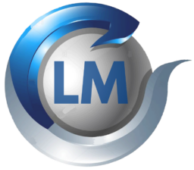-
Adcock posted an update 1 year ago
As the EV market booms, Chinese manufacturers are pursuing growth overseas. But they deal with a big obstacle: branding. The majority of are not household names in Europe, where they have low brand name acknowledgment and count on inexpensive costs. They need to increase that image and build more trust to take on the established brand names of VW, GM, Tesla, and others.
That requires a lot more than simply creating excellent items and marketing projects. It likewise implies acquiring a foothold in the battery supply chain and developing core technologies that improve operational performance. BYD, for instance, has a strong background as a battery maker– something that provides it a huge upper hand in the EV market. Its own batteries represent 30% of the cost of its automobiles, and five of China’s top-selling EV designs are produced by BYD.
Other Chinese business have made comparable investments in their core battery technology, giving them a considerable benefit over foreign competitors. NIO (pronounced “ni”) is one of the better-known of these, with a model lineup that consists of a stylish SUV and a fast-charging sedan. But NIO hasn’t broken through the 10,000-cars-per-month sales barrier, and its current model, the G6, is a bit too expensive for mass adoption.
Another well-known player is XPeng, which boasts a few different models and has actually already passed the 7,000 mark in China. It is seeking to Europe next, where it just recently started selling its SUV-style XPeng One in Norway. And it has a smaller vehicle, the XPeng One EV, in advancement that it states will be able to achieve about 10,000 miles between charges.
Li Auto is yet to break the 10,000-cars-per-month barrier, but it too has a European strategy. The business will start selling its brand-new EV, the One, in the United Kingdom later on this year. The SUV will be a series PHEV, with a petrol engine functioning as a generator to extend the range of the electrical drivetrain.
SGMW also plans to sell its most affordable EV, the $4,104 Wuling Hongguang mini vehicle, in the European market. The business, which is owned by state-owned GAC Group, still produces ICE automobiles but is moving production toward EVs in keeping with China’s EV policy. It reached 4th place in Chinese EV sales last year, with a 4% share, according to InsideEVs.
However while these Chinese firms have the core active ingredients of a successful EV organization– strong battery technology, a firm hold on the battery supply chain, and operational benefits– they are not yet the dominant force they need to be in international EV markets. That could alter as they concentrate on global expansion, specifically to the United States, which is the most profitable market for EVs. But Beijing is most likely to be careful about using its market power and rare-earth dominance as levers against its Western rivals. That’s since it would run the risk of alienating the countries that are currently most thinking about importing EVs from China. That is why most of these business have decided to develop joint endeavors with foreign partners.
